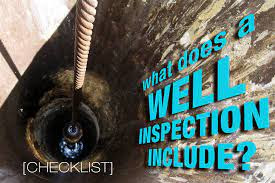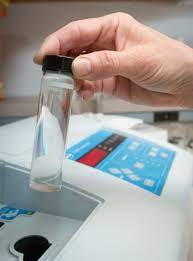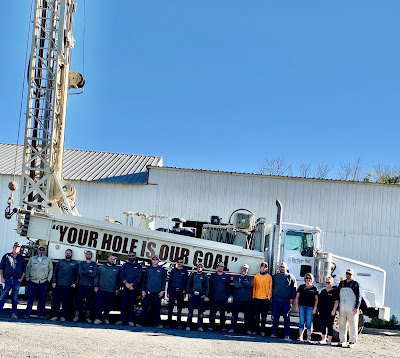What should a quality Well Inspection Include?
Buying a house is a serious investment, and in today’s market it’s incredibly risky. Many people are foregoing inspections to get their offer on homes to be accepted. The risks of not doing a well inspection during a real estate transaction are incredibly high – what good is a home without water? Some problems found by a quality well inspection are low well production/dry wells, water quality issues including the presence of harmful bacteria or arsenic, and failing mechanical components. Common problems include water quality issues, failing components, and inadequate construction for current codes.
What should a quality well inspection include in your real estate transaction? At Heritage Well Service we recommend at minimum flow testing to the well, water system component inspection, and water quality testing for lead, arsenic, nitrates, and bacteria. The National Ground Water Association additionally recommends annual inspection and bacteria testing of all water wells, and State and County requirements may recommend additional items to be tested regularly.
Well Flow Testing
A good well inspection includes flow testing the well to try to determine what the well or pump capacity is in the well. A well flow test is typically performed by running one or more outdoor fixtures and measuring the amount of water coming from the well, measuring pump operation / cycle times, and measuring the amp draw of the motor down the well to determine how deep the water in the well is or whether it has stabilized. Additionally, sometimes sonic testing equipment can be used to measure water levels in the well without actually inserting probes in the well. A sounding meter can be used to lower an electrode into the well to measure water level more accurately, but in some cases this can become entangled in the wires near the pump, or cause issues with the bacteria testing conducted later in the inspection.
Most wells make enough water for the peak demands of a house. If a problem is found, it’s most often that the well doesn’t make quite as much water as we would like, though often it meets code requirements. Some wells need more sophisticated booster pump and water storage systems to manage the well production.
Well Component Inspection
A thorough well inspection should include multi point testing of various components found in all well water systems, including pressure tanks, motor controls, pressure switches, float switches, insulation testing wires, and motor amperage measurements and resistance checks.
Most equipment has a diagnostic process and standard measurements published by the manufacturers. If the equipment tests outside of the range recommended by the manufacturer, it may be considered to be failing or failed. Additionally, some components fail slowly, such as pressure tanks, in a way that isn’t necessarily observable without a trained eye. Failed pressure tanks can cause catastrophic water system damage in the long run, even though they appear to be in OK condition.
Bacteria, Arsenic, and Nitrates Testing
Bacteria testing is often done to establish whether a well is suffering from surface water intrusion. Water system bacteria testing often is looking for e. Coli, and Coliform bacterias.
Coliform bacteria most often found from surface water intrusion or improper sampling techniques. A failed test result is cause for concern, but Coliform bacteria is a family of bacteria that is very common on the surface. We recommend a trained well and pump technician always take the sample to reduce the likelihood of cross contamination at the site. If cross contamination can be ruled out, other possible sources of contamination should be looked at – this may require additional testing that cannot necessarily be completed during a normal well inspection.
e. Coli is generally only found in the gut bacteria of animals and can only live outside of a host for a limited period of time. The presence of this bacteria indicates that an animal may be dead in or very near the well, there’s direct surface water influence from an animal yard, or there has been animals defecating in the well. This is not a common issue, but is 100% cause for concern! Your well inspector should work diligently to quickly establish the source of the well contamination and make recommendations for corrective action.
Arsenic is most often a naturally occurring contaminant. Sometimes arsenic occurs in the well at levels that are higher than the federal drinking water requirements of 10 parts per billion (ppb). Complicated engineered treatment systems can be used to remove arsenic. Prior to the mid 2000’s, the arsenic maximum contaminant level was 50 ppb. Prior to the mid 1990’s, the level was almost 100 ppb. Realistically, there are a small number of wells in our region that have elevated levels of arsenic that need to be mitigated. We currently estimate that less than 3% of all wells have elevated arsenic levels.
Nitrates are often tested to meet lending requirements and are often encountered in our regional area. If Nitrates are found, there is filtration equipment on the market to tackle it, maintenance and installation are relatively easy.
Comprehensive Report
Heritage Well Service will provide a written report upon completion of a well inspection, often with estimates for any corrections/repairs noted. A comprehensive report should include definitions and pictures of your water system components and an explanation of any deficiencies found.
If you have any questions about getting a well inspection report, please contact our team to further discuss your report at 951-763-2210 or heritagewellservice@gmail.com.




Comments
Post a Comment